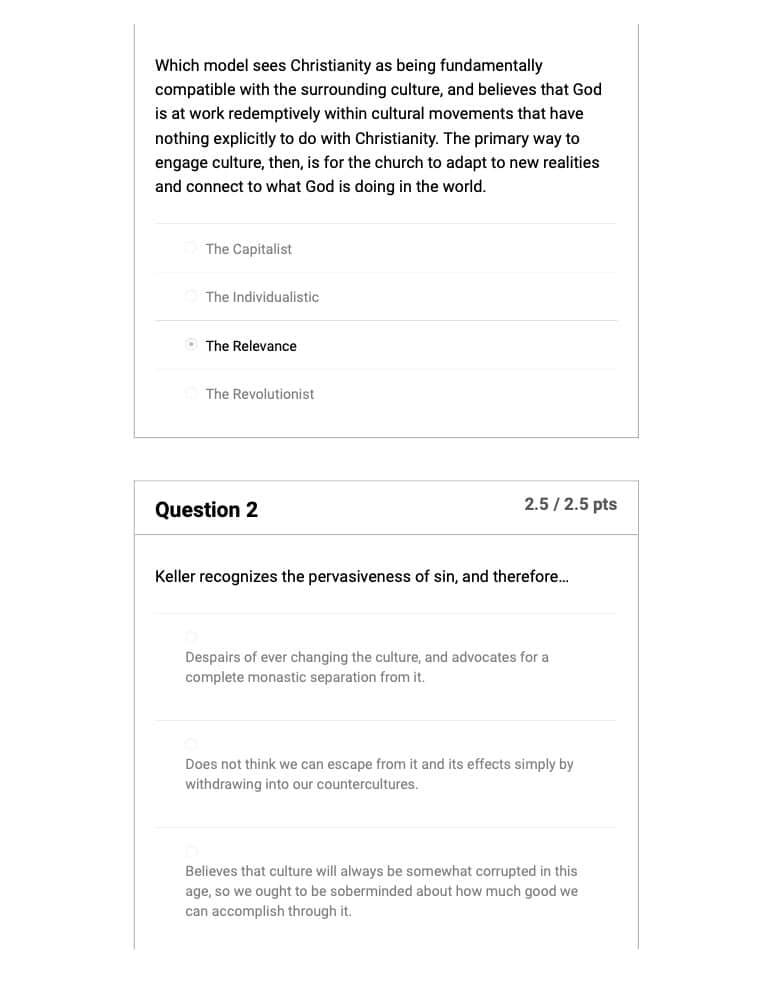RLGN 210 Quiz 6
RLGN 210 Quiz 6 The Models of Engagement
Covers the Learn material from Module 6: Week 6.
- Which model sees Christianity as being fundamentally compatible with the surrounding culture, and believes that God is at work redemptively within cultural movements that have nothing explicitly to do with Christianity. The primary way to engage culture, then, is for the church to adapt to new realities and connect to what God is doing in the world.
- Keller recognizes the pervasiveness of sin, and therefore…
- What does Keller describe as the main case he makes in this chapter?
- How does Keller diagnose each of the models for cultural engagement?
- Sin has ruined and defaced the moral capacities of man, but has left untouched the rational faculties, and as such the sacrifice of Christ is necessary not so that we can know the truth, but so that we can live the truth that we all intuitively know.
- Christ’s saving and ruling power comes to us in two great stages: the first at the Incarnation, and the second at the Transfiguration.
- Keller believes that much of the current division in the church over the different models of cultural engagement boils down to the fundamental question:
- Which of the following is one of the two “fundamental questions” that each model of cultural engagement is attempting to answer?
- Which model has a core teaching that God rules all of creation, but does so in two distinct ways. First, there is the common kingdom, established through the covenant with Noah, and secondly there is the redemptive kingdom, established with Abraham in Genesis 12. It believes that only the building of the church—evangelism, discipleship, and Christian community—is “kingdom work,” and that the main problem today is the confusion of these two kingdoms?
- Which model runs the risk of downplaying the need for theological reflection and Christian doctrine, as well as tends to seem dated as cultural trends shift?
- What does Keller believe about each model of cultural engagement?
- The doctrine of creation tells us that, first of all, the material world—including culture—is important, and not to be discarded or abused.
- The main positive focus of the Transformationist model is…
- While the doctrine of creation shows us the goodness of work, even in so-called secular callings, and gives us a vision for culture building, the doctrine of the fall warns us against utopianism and triumphalism.
- The basic idea of the Two Kingdoms model centers on…
- Despite seeing benefis in each cultural engagement model, Keller ultimately sides most strongly with the Relevant model.
- Transformationism has been accused of failing to recognize the dangers of Christians becoming too absorbed in seeking and exercising power.
- What are the two complementary truths that a balanced view of the Fall requires?
- Why does Keller recommend using models to grapple with cultural engagement, even though he recognizes that there are flaws in each?
- Throughout this chapter, Keller routinely compares his models of cultural engagement with the models proposed by which influential Christian thinker?
